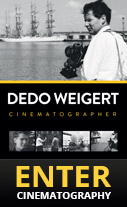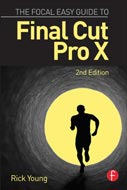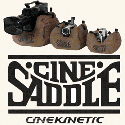The idea
I was asked by a local dance teacher Ayse Denizli to help promote her new dance academy online. I suggested making a 2 minute promotion video online showcasing what she does best.
I began storyboarding the idea and had a clear vision without too much thought. I wanted a story, rather than a simple few clips of a dance class. So I wanted a build up into the video, an introduction and then focus on Ayse teaching as well as some solo segments to mix to show just how good she can dance too. I wanted these two main elements to be quite distinctively different even though we were shooting in the same location.
I broke the session into two parts, focusing firstly on the intro – the wide room shots, lights turning on, and preparations. Then moved onto the dancing – Ayse first in her normal casual dance wear before moving on to her branded uniform for the class – this helped keep the two distinctively different. Having someone that can do anything you ask them to do really helps with a shoot like this: the first segments were quite directed; once the class took place it was shot much more of a candid style.
The equipment
I took my usual arsenal – the glidecam, slider, monopod and tripod. My ethos is quite distinctive and evident in most of my work – I like shots to move, be fluid and not static. That being said I do like to throw in the occasional static shot to break up the footage, but 9 times out of 10 if it moves from the slider or glidecam, I will go for that shot. Simply to look more cinematic. The biggest difference on this shoot though was the fundamental item – the camera. It was not my tried and tested Canon hardware that I have been using for around 12 years.
The Sony A7RII
So I had arrived with a mirrorless camera! For me the main reason for even looking elsewhere was the lack of movement with the Canon camera. I have been using the Canon 5dMKIII ever since it was released and it has been great. However, since 4k cameras have been available my 5D Mark III has started to lag behind. Even the tiny 4k camera on my Phantom3 drone impressed me so much and opened my eyes to how sharp an image can be. I love to shoot wide and on the Canon I just can’t get the quality and sharpness I desire any more. I use a 16-35 f2.8, so its more the resolution of the camera as opposed to the optics.
I love slow motion, so for me I always shoot 50fps, and for the Canon MKIII this means filming at 720p. Whilst it has got me where I am today without any problems, technology is moving so fast and its now just not enough resolution. The Sony A7RII lets me shoot 50fps at 1080p – so for me this is standard now. I no longer have to decide to shoot 50fps or 25fps – I generally leave it in 50fps. Unless its an interview or something where I wouldn’t ever slow the footage down. Then I would choose to shoot to 4K.
Speaking of loving slow motion, the 100fps on the A7RII was a big attraction- you always want more. Slowing footage to 50% is fun, but 25% is so much MORE fun. This speed is available at 720p, so again the same resolution as I was using on the Canon 5D. Don’t get me wrong, the bit rate is the same so the image quality isn’t as good, but for the shots where you really need to slow down the image, this is epic, and the results looks great.
I actually enjoyed the whole mirrorless system a lot more than I thought I would. I love being able to shoot video whilst still using the viewfinder, it’s like going back to the 90s. Of course with a glidecam this doesn’t really work, but on a monopod this works great.
Another benefit is the stabilizer in camera – I can handhold the 50mm and get stable shots – I could have never have done this with the Canon. Going back to 100fps – if you slow the footage down to 25% , you can actually handhold the 200mm using the IS and inbuilt camera stabilizer – incredible.
I also love the new flip out screen. I often shoot low on a slider which is very tricky on the fixed screen of the canon and results in me having to lay on the floor – definitely not ideal.
Now I can simply flip out the screen and life is good again.
Peaking is another lovely benefit on the A7RII. While there were ways to make this work on the Canon, it wasn’t as simple. To have this built-in as standard in the Sony is a lovely benefit.
Some have mentioned the battery life as being an issue with the Sony A&RII. My feeling is with several shoots under my belt using this camera, it really isn’t an issue. On average I have gone through 3 or 4 batteries – keep in mind these batteries are small in size and affordable. This means you can easily have 4 charged batteries and these are barely noticeable in a bag. The camera has a good clear battery indicator so you know when you need to switch out.
Conclusion: the A7RII for Video and Photography
When looking for a new solution, initially I was very drawn to the A7SII – simply because I shoot a lot of low light and the noise levels were important to me. However I am still 50% a photographer and whilst I toyed with the idea of being able to get by on 12mp from the A7SII – in reality it just isn’t enough.
I am very happy with the Metabones solution for attaching Canon EF lenses. I have kept all my Canon EF lenses so the initial outlay wasn’t huge – for photography this needs another opinion which I won’t go into here – but for video with full manual focusing – the solution is perfect.
So for me, being very much a photographer and videographer – the Sony A7RII is the new perfect camera to accommodate both needs. I have still kept the Canon 5D MKIII however just as a backup.
Visit Scott’s company website, Dreamshock Design: www.dreamshock.com
Rick Young Ltd 2024 | Get RSS >> | MovieMachine24 >>
- XEffects Viral Video Thirds Plugins For Final Cut Pro X
- Shot with Panasonic EVA1
- SpeedScriber now available: transforms transcription for Avid, FCPX and Premiere Pro
- Panasonic Leica 100-400mm Telezoom - stunning images!
- Sonnet Launches Dual-Slot SxS Pro Card Reader, Industry's First for Thunderbolt 3
- Should you Buy The Zhiyun Crane - FULL GIMBAL REVIEW AND TEST
- HD Warrior Review of the Panasonic FZ2000
- Video news in 90 Seconds: Panasonic EVA1 Pricing & Specs, Sony FS5 Firmware Pulled, DaVinci Resolve 14 beta 6
- Panasonic Leica 8-18mm lens with Panasonic GH5 and Zhiyun Crane
- Custom grip for Panasonic GX8





































